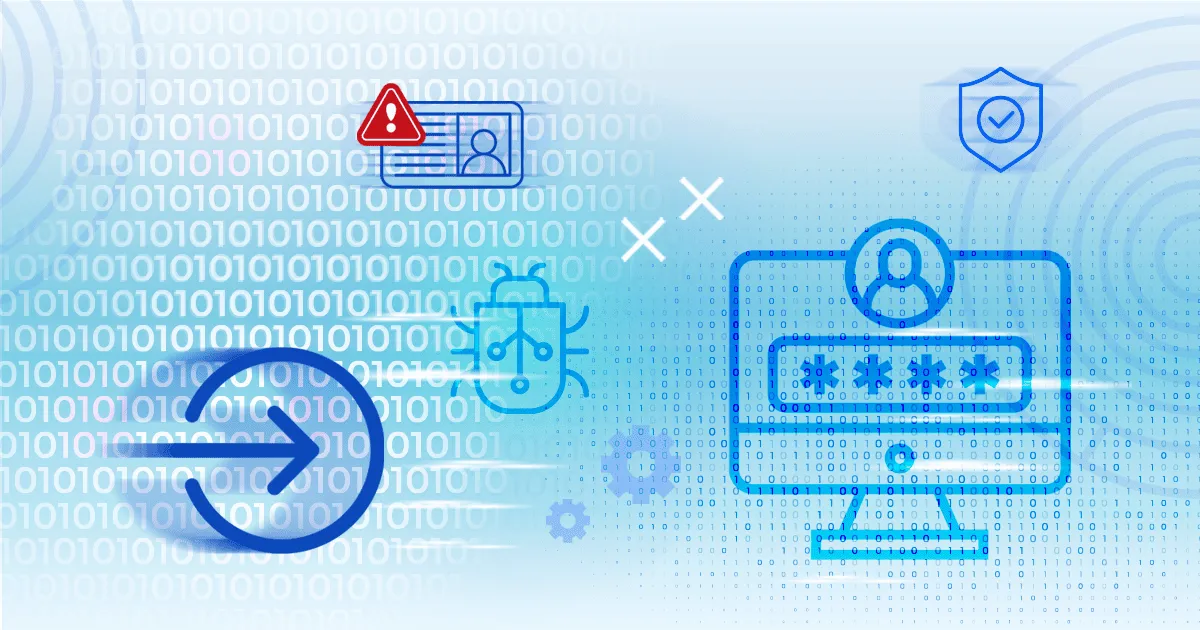Guide: Rethinking application security risk for federal agencies
Cybersecurity risk can be hard to define and measure, even though the consequences of a cyberattack are very real. This post suggests a practical approach to determining and reducing application security risk for federal organizations and announces the Invicti ebook Let’s Talk About Risk.

Under pressure to comply with security mandates and make rapid improvements to their security posture, federal organizations are looking for solutions and approaches that combine broad visibility with practical guidance. Reframing cybersecurity thinking in terms of real-world risk is a proven way to prioritize efforts and get measurable results where they matter most. The Invicti ebook Let’s talk about risk: The silent impact of application security risk on federal organizations discusses in detail the many facets of cybersecurity risks and suggests best practices for identifying and managing risks related to web application security – your first line of defense in a cloud-first world.
Web applications are the new network perimeter
The traditional approach of enclosing sensitive internal systems within a fortified network perimeter is straining to accommodate the realities of cloud-based deployments, distributed application architectures, and the proliferation of web-based access to business-critical systems. Even as on-premise network components find their analogs in software-defined cloud infrastructures, web applications and APIs have shot into the lead as the primary attack vector for cybercriminals. Compared to internal systems, your web assets are accessible from anywhere in the world and often act as gateways to mission-critical data, making them a crucial component of any risk-based appraisal of an agency’s overall security posture.
Know your attack surface to start identifying risks
While network infrastructure tends to be fairly well-defined, your organization’s web attack surface can be a far more nebulous concept, often encompassing a multitude of systems, technologies, locations, and owners. From old websites to the APIs of new microservice-based applications, web assets accumulate over the years and across environments, often hidden from view but always contributing to the overall web attack surface. Mapping out that attack surface is a crucial prerequisite for defining cybersecurity risk to federal agencies. Web asset discovery services, whether standalone or integrated into application security solutions, can eliminate that security blind spot by detecting your entire attackable web footprint, providing a solid baseline for determining risk.
Structured approaches to security risk analysis
With the attack surface mapped out, the next step is to evaluate your current security posture and use that information to guide conversations about risk. For a best-practice application security program based around dynamic application security testing (DAST), this includes obtaining reliable vulnerability testing data from scans covering the entire attack surface identified during discovery. To incorporate these results into other risk estimates and turn them into concrete values, you can use methodologies like the FAIR approach to assign specific numbers to threats and risk factors. This allows you to move from qualitative to quantitative risk management and present factual risk assessments to decision-makers and other stakeholders.
Managing risk with fact-based web application security testing
Whatever specific approach to risk assessment and management you choose, trustworthy and accurate information about your current cybersecurity posture is the non-negotiable foundation of your entire security program. In the realm of web application security, Invicti can help by delivering actionable vulnerability information obtained using Proof-Based Scanning technology and automatically triaged for technical severity. All vulnerabilities marked as confirmed by the Invicti solution are directly exploitable, providing clear input for risk assessment and remediation planning. This allows agencies to know for a fact how exposed to attacks they are across all their web environments and assets, and how this contributes to their overall cybersecurity risk.
Risk is theoretical – the consequences are real
While any discussion of risk necessarily involves probabilities and hypothetical situations, the consequences of those risks are very much measurable. In one Invicti study, we asked cyber leaders in the federal sector about the most common consequences of application security risks for their organizations. 62% said they’ve experienced project deployment delays caused by application security concerns, 51% have had downtime caused by a web application vulnerability, and 45% have reported cases of data loss due to an attack on a vulnerable web application. So while a vulnerability may only carry a theoretical risk until exploited, the consequences of a successful attack are very much tangible – from immediate financial damage to sensitive data disclosure, loss of productivity, and protracted compliance investigations.
How Invicti helps agencies assess and reduce cybersecurity risk
As the industry’s top DAST vendor and leading provider of application security solutions for government organizations, Invicti supports a test-based approach to security risk assessment and management. Building on our mature and provably accurate DAST capabilities, we have added interactive application security testing (IAST) and software composition analysis (SCA) functionality to extend the depth and breadth of web security insights needed to assess and reduce security risk on a continuous basis. To learn more, get the full Invicti ebook Let’s talk about risk: The silent impact of application security risk on federal organizations.


